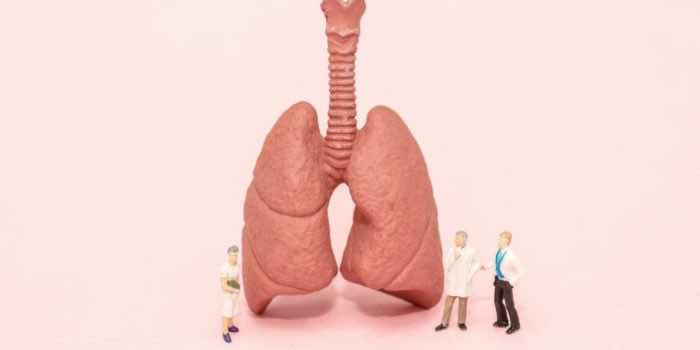A promising future solution for human implantation has been 3D printed by United Therapeutics Corp. using photopolymer-based bioprinting technology from 3D Systems. The designs comprise a record 44 trillion voxels that lay out 4000 kilometers of pulmonary capillaries and 200 million alveoli, reported Dr. Martine Rothblatt, United Therapeutics’s chairperson and chief executive officer, and Chuck Hull, 3D Systems’s co-founder, executive vice president, and chief technology officer for regenerative medicine. Rothblatt and Hull spoke during the LIFE ITSELF Conference held from May 31 to June 3, 2022, in San Diego, in a session entitled “What’s the Future of Organ Transplantation?”
Scientists at United Therapeutics aspire to cellularize these 3D-printed scaffolds with a patient’s own stem cells to create tolerable, transplantable human lungs that should not require immunosuppression to stop rejection, the companies shared in a news release.

“Last week, it was exciting to show the public our 3D-printed human lung scaffold, but we’re thrilled to share that our 3D-printed lung scaffolds are now demonstrating gas exchange in animal models. We are regularly printing lung scaffolds as accurately as driving across the United States and not deviating from a course by more than the width of a human hair,” said Rothblatt in the release. “With the continued hard work of dedicated scientists and engineers at United Therapeutics and 3D Systems, we hope to have these personalized, manufactured lungs cleared for human trials in under five years.”
It was reported that more than 150,000 Americans die from lung disease each year, according to the U.S. Health Resources and Services Administration. And while 2,524 patients in the United States received a lung transplant in 2021, there are still 1,075 patients on the U.S. lung transplant waiting list as of June 3, 2022.
“Our goal is to create an unlimited supply of transplantable lungs in the future,” Rothblatt stated. “Even today, we are using a process called ex-vivo lung perfusion to add to the supply of transplantable lungs by extending by several hours the period of assessment and viability for human donor lungs, resulting in over 230 lives extended to date.”

Added Hull: “These lung designs can be printed in as little as three weeks using our latest advanced photopolymer-based bioprinting technology we call Print to Perfusion.” According to 3D Systems’s website, the process 3D prints high-resolution scaffolds that can be “perfused with living cells to create tissues.”
LIFE ITSELF was organized and hosted by Dr. Sanjay Gupta and Marc Hodosh and was sponsored by CNN, United Therapeutics, and others.
United Therapeutics is the first publicly traded biotech or pharmaceutical company to take the form of a public benefit corporation (PBC). One of its aims is to expand the availability of transplantable organs.


